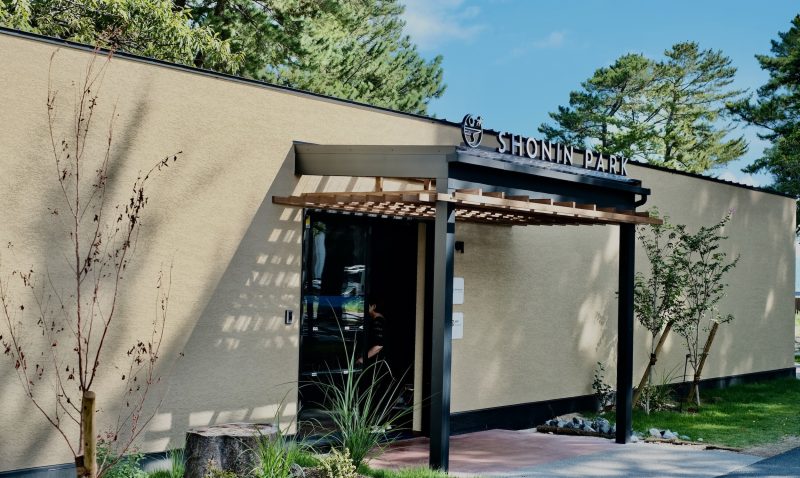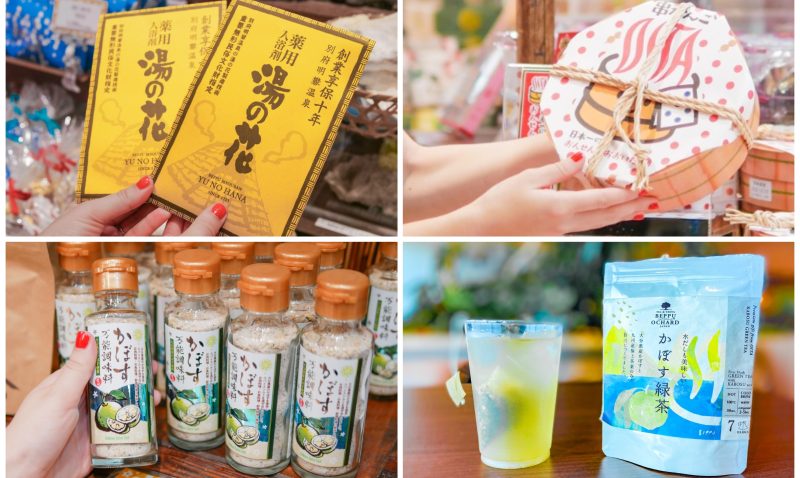
Beppu City is renowned worldwide as a hot spring resort, but it is also a place where the traditional Japanese craft of bamboo craftsmanship thrives. Beppu bamboo craft is a traditional Japanese handicraft, combining ancient techniques with modern sensibilities. This article covers the history, characteristics, and production process of Beppu bamboo crafts, and recommends two souvenir shops where you can purchase them.
What is Beppu Bamboo Craft?
Beppu bamboo craft (Beppu Takezaiku) is a traditional craft woven primarily from madake bamboo, centered in Beppu City, Oita Prefecture. The hallmark of Beppu bamboo craft is the “weaving” technique, where bamboo strips are woven together by hand. There are eight basic weaving patterns: Cross Pattern (Yotsume ami), Hexagonal Pattern (Mutsume ami), Octagonal Pattern (Yatsume ami), Netting Pattern (Ajiro ami), Mat Pattern (Gozame ami), Pine Needle Pattern (Matsuba ami), Chrysanthemum Bottom Pattern (Kikuzoko ami), and Bull’s Eye Pattern (Rinko ami). These patterns can be combined in over 200 different ways. This craft is the only one in Oita Prefecture that has been designated as a traditional Japanese craft product by the Ministry of Economy, Trade and Industry.
In addition to traditional items such as flower baskets, rice baskets, and serving baskets, modern items like basket bags have also become popular. Beppu bamboo crafts are also increasingly used in the interior decoration of inns and as fine art pieces. The superior craftsmanship and beautiful design of Beppu bamboo crafts have garnered many fans both in Japan and overseas.
The History of Beppu Bamboo Craft
Next, we will delve deeper into the history of Beppu Bamboo Craft.
Origins
The history of Beppu bamboo craft dates back to the Nara period. According to the “Nihon Shoki,” it began when Emperor Keiko’s kitchen staff made a bowl basket from high-quality shinodake bamboo during his visit to Beppu after his conquest of the Kumaso in southern Kyushu.
Muromachi Period
During the Muromachi period, the production of baskets for peddlers and the establishment of the Beppu bamboo craft market led to the widespread adoption of bamboo crafting techniques and laid the foundation for the local bamboo craft industry.
Edo Period
During the Edo period, Beppu gained a reputation as Japan’s premier hot spring destination. Visitors from all over the country began to take home bamboo craft household items as souvenirs, further invigorating the bamboo craft market and cementing it as a local industry.
Meiji Period
In 1902, the Department of Bamboo Basket Crafts in the Beppu Technical Apprentice School was established, marking the evolution of Beppu bamboo crafts from mere souvenirs to highly skilled craft items. In 1967, Shounsai Shono became the first Living National Treasure in bamboo crafts, and advanced techniques have been handed down from generation to generation.
Modern Era and Designation as Traditional Craft
In 1979, the Beppu bamboo craft was designated a traditional Japanese craft by the Ministry of Economy, Trade and Industry. Today, it is appreciated not only as a craft but also as an art form.
As mentioned above, there are over 200 weaving patterns in the Beppu bamboo craft, with its techniques and expressive methods evolving across generations.
Beppu Bamboo Craft Production Process
Beppu bamboo craft is meticulously handcrafted through several detailed steps. Let’s take a closer look at this intricate production process.
1. Harvesting and Oil Extraction
Quality bamboo that has grown for 3-4 years is selected and harvested from bamboo groves. The bamboo is then boiled in water with caustic soda for 15 minutes to extract the oil, a process known as “oil extraction.”
2. Sun Drying
After oil extraction, the bamboo is sun-dried, turning it into a beautiful ivory color. This sun-dried bamboo, called “sarashidake,” becomes the primary material for bamboo crafts.
3. Cutting and Rough Splitting
The dried bamboo is cut to the required length using a tool called a “kikuwari.” Nodes are removed, and the bamboo is split in half with a bamboo splitting knife, then further split repeatedly until it reaches a usable width. This process, known as “rough splitting,” appears simple but requires about three years of experience to achieve even splits.
4. Stripping
The split bamboo is gradually processed to thin it out in stages known as ‘rough stripping,’ ‘small splitting,’ and ‘thin stripping.’ During rough stripping, the bamboo is peeled, removing the skin and inner layers in a 4:6 ratio.
5. Finishing the Strips
A tool called ‘suki-sen’ is used to even out the thickness of the bamboo strips. They are then passed through width-adjusting knives to ensure uniform width. Finally, the edges are trimmed with a chamfering knife to create bamboo strips suitable for their intended use.
6. Bottom Weaving
Bottom weaving is the most technically demanding part of bamboo crafting. The process of raising the flat bottom into a three-dimensional shape, known as “raising the waist,” requires heating the bamboo strips over a fire while shaping them.
7. Body and Neck Weaving
After completing the bottom weaving, the process moves on to the body weaving. The weaving pattern is adjusted based on the design and purpose of the item being made.
8. Finishing the Edges and Attachments
Once the weaving is complete, the edges are finished. There are different methods for finishing edges, such as “common edges,” “applied edges,” and “wrapped edges.” Finally, handles and other attachments are added to complete the item.
9. Painting
The finished items are boiled in dye for staining, a process known as base dyeing. Depending on whether the item is dyed or not, it is called “aomono” (green items), “shiromono” (white items), “somemono” (dyed items), or “kuromono” (black items). If the item is lacquered, it is dried in a high-humidity environment. Proper temperature and humidity are essential for drying lacquer. After drying, decorations are added if necessary to complete the item.
This intricate and labor-intensive process results in beautiful and practical bamboo crafts, showcasing the skill of experienced artisans.
2 Recommended Shops for Buying Beppu Bamboo Crafts
Beppu City is home to numerous shops where you can purchase Beppu bamboo crafts. Here are two highly recommended shops:
1. cotake
Cotake offers a wide range of bamboo craft accessories that incorporate modern sensibilities. You’ll find unique and beautiful items such as earrings and bangles.
Cotake Bamboo Earrings
Cotake Bamboo Bangles
At Cotake, you’ll find a curated selection of works by young artisans, featuring everyday items, basket bags, accessories, and decorative objects. These items are on display and available for purchase, so be sure to visit and explore these unique and beautiful creations.
- Opening hours: Monday to Saturday, 10:00 AM to 5:00 PM
- Closed on Sundays
- Website: cotake-beppu.com
2. Beppu City Traditional Bamboo Crafts Center
The Beppu City Traditional Bamboo Crafts Center is a facility where you can learn about the culture and history of bamboo craftsmanship. The first floor features an extensive collection of exhibits, and the second floor includes classrooms, a museum shop, and a cafe. You can also try your hand at making your own bamboo crafts, with many items available for purchase.
The experience of crafting your own bamboo items is especially popular. If you have the time, be sure to give it a try!
For more information, visit this site (reservations are required one week in advance).


